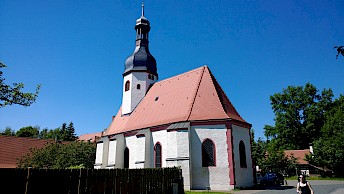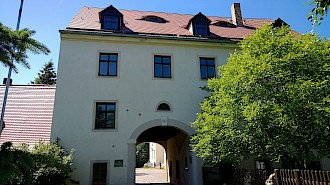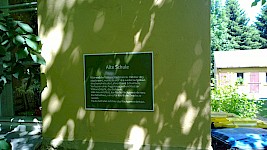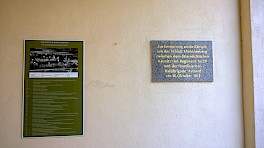Walking the battlefields of Leipzig
There is nothing better for battle research, in my opinion, than walking on the very ground where it took place. The terrain can give insight into how the battle was fought and why it played out how it did. When my girlfriend and I returned to Leipzig for Wave Gotik Treffen 2014 , I was determined to combine our music festival with a tour of Markleeberg and Dolitz.
In WSS 68 , I wrote a scenario called “Holding the line at Leipzig”. It focussed on the battles for the crossings over the river Pleisse where the Austrians fought against the Dutchy of Warsaw’s troops at Connewitz, Lossnig, Dolitz and Markleeberg. The most famous actions were fought at the manors of Dolitz and Markleeberg plus the fighting for the village of Markleeberg itself where the Prussians slowly pushed the Poles back. Sadly the southern part of the village of Markleeberg is now a lake, formerly a cobalt mine.
We visited Markleeberg on a scorching Sunday afternoon. The manor at Markleeberg and surroundings survives in excellent condition. The Torhaus contains a museum to the battle, which sadly was closed when we visited (on Whitsun). The gatehouse bears the marks of the Polish cannonballs fired at it back in 1813. Here, the Poles destroyed the bridges but the Austrians managed to improvise crossing points and attack. Seeing the river crossing, they are only about 15 feet wide but very deep (a good 8-10 feet). From the history, we know the Pleisse was swollen with flood water. Crossing without a bridge would have been foolhardy at best (ask Poniatowski), so the destroyed bridge at the school house did offer the best place to cross.
Our next stop (past the Agra agricultural hall) was Dolitz and its manor. Here the 1st Batallion of the 24th Austrian Regiment stormed the manor and held it against Polish counterattacks. Sadly the manor house itself was destroyed in World war 2 but several outbuildings survive including the Torhaus. The ‘mill race’ of the manor has disappearred but you can still get an idea of the conduct of the battle. The open courtyard and bridge over the mill race would have been deadly for the assaulting Austrians. The Torhaus still has the cannonballs embedded in the walls, the marks of yet more Polish artillery!
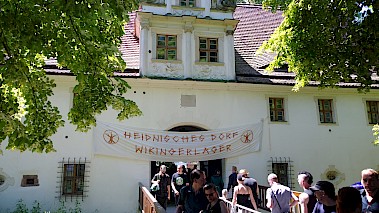 There is a small museum dedicated to the actions at Dolitz in the gatehouse. It contains several dioramas with miniatures. Again, thanks to the grounds being taken over for a medieval festival, the museum was closed. I was not having a lot of luck with museums! Still it gave me a good perspective on the battle. The Polish were unfortunate not to garrison both manors more strongly although I suspect they were stretched too thin as it was so this wasn’t an option.
There is a small museum dedicated to the actions at Dolitz in the gatehouse. It contains several dioramas with miniatures. Again, thanks to the grounds being taken over for a medieval festival, the museum was closed. I was not having a lot of luck with museums! Still it gave me a good perspective on the battle. The Polish were unfortunate not to garrison both manors more strongly although I suspect they were stretched too thin as it was so this wasn’t an option.
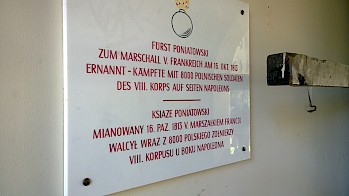
Where once there had been a desperate stuggle being fought to decide the future of Europe, there were now hundreds of people in black or medieval clothing listening to folk rock and drinking mead. I did wonder if anyone else knew the history (apart from my poor girlfriend who was doing her best to humour me). Suffice to say Leipzig was great fun, combining my love of history during the day and my love of music during the evening.

